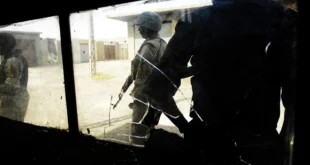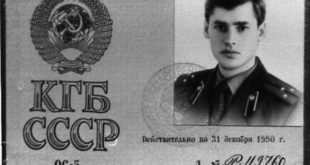Among the most celebrated veterans of the Vietnam War, retired U.S. Army Colonel Bruce Crandall is best known for his actions of November 14, 1965, when he flew 22 missions in an unarmed helicopter into enemy fire to evacuate more than 70 wounded and bring ammunition and supplies to United States forces under the command of then-Colonel Hal Moore. Crandall’s actions at LZ X-Ray – chronicled in the bestselling memoir from Moore and Joseph Galloway, ‘We Were Soldiers Once…and Young’ and the subsequent movie featuring Greg Kinnear as Crandall – were fully recognized when he was awarded the Medal of Honor in 2007. Colonel Crandall is a veteran of more than 900 combat missions.
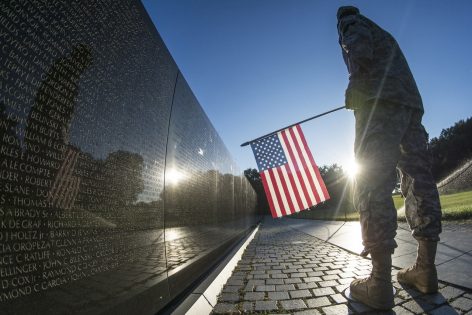
Major Battles, La Drang, Hue, Operation Linebacker | BY DAVID VERGUN, DOD NEWS
In 2012, President Barack Obama signed a presidential proclamation, designating March 29 as the annual observance of Vietnam War Veterans Day.
The signing of the proclamation marked the 50th anniversary of the departure of the last American troops from Vietnam — March 29, 1973. Only U.S. embassy personnel and support staff remained in South Vietnam until the fall of Saigon on April 30, 1975.
“The Vietnam War is a story of service members of different backgrounds, colors and creeds who came together to complete a daunting mission,” the proclamation states. “It is a story of Americans from every corner of our nation who left the warmth of family to serve the country they loved. It is a story of patriots who braved the line of fire, who cast themselves into harm’s way to save a friend, who fought hour after hour, day after day to preserve the liberties we hold dear.”
More than 58,000 Americans were killed and many thousands more were wounded and injured or determined to be missing.
The proclamation also states: “In one of the war’s most profound tragedies, many of these men and women came home to be shunned or neglected — to face treatment unbefitting their courage and a welcome unworthy of their example. We must never let this happen again.”
Although U.S. military advisors had been in South Vietnam since 1955, the proclamation states that Jan. 12, 1962, was the starting point of the war. This is the date when America’s first combat mission, Operation Chopper, was launched.
On that day, U.S. Army pilots airlifted more than 1,000 South Vietnamese soldiers to an area about 12 miles west of Saigon to capture a National Liberation Front stronghold. The NLF, also known as the Viet Cong, were communist fighters who were in South Vietnam.
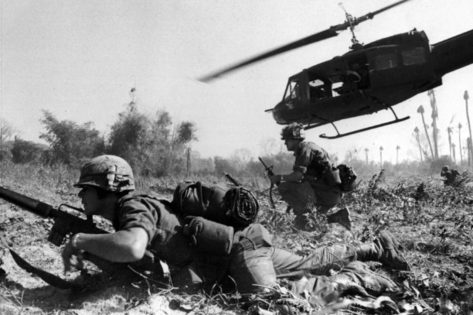
Some of the Significant Battles
The Battle of Ia Drang, which lasted from Nov. 14 -18, 1965, was the first major battle between the U.S. Army and the North Vietnamese Army. It took place in the Central Highlands of South Vietnam.
The battle saw the first use of a large scale helicopter air assault and Boeing B-52 Stratofortress strategic bombers being used in a tactical support role.
The Battle of Khe Sanh took place in northwestern Quảng Trị Province in South Vietnam, from Jan. 21 to July 9, 1968. The main U.S. forces defending Khe Sanh Combat Base from a much larger enemy force consisting of three NVA divisions were two U.S. Marine Corps regiments, supported by elements from the U.S. Army, U.S. Air Force and South Vietnamese soldiers.
The Battle of Huế occurred within that same time period, Jan. 31 to March 2, 1968.
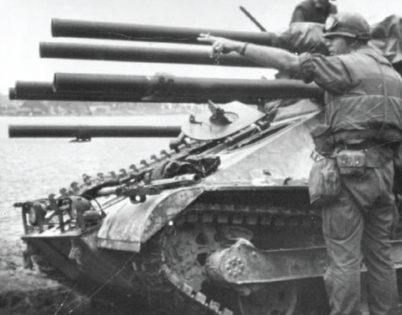
The battle was a major military engagement which was part of the larger Tết Offensive launched by the NVA and Viet Cong.
After initially losing control of most of Huế, which was a major city in northern South Vietnam, the combined South Vietnamese and American forces gradually recaptured the city after more than a month of intense house-to-house fighting.
Besides ground campaigns, there were also air campaigns, with one of the most significant being Operation Rolling Thunder. The operation lasted from March 2, 1965, to Nov. 2, 1968, and involved a sustained aerial bombardment by U.S. and South Vietnamese air assets against targets in North Vietnam. The operation was designed to halt enemy supplies from reaching South Vietnam.
In 1972, another massive bombing campaign was conducted against North Vietnam, known as Operation Linebacker.
Vietnam Was Learning Experience for Renowned Author by Skip Vaughn
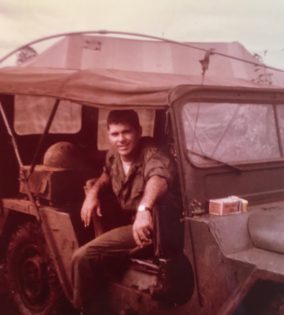
Homer Hickam joined the Army in January 1966 under a college option program which promised to send him to Officer Candidate School if he successfully completed basic training and advanced individual training.
The Virginia Tech product went to Fort Leonard Wood, Missouri, for eight weeks of basic training and eight more weeks of advanced individual training in infantry and engineering. Next came 23 weeks of Officer Candidate School at Fort Belvoir, Virginia.
“That was an interesting time,” Hickam, now a renowned author in Huntsville, Alabama, said of the rigors of OCS. “Anyway, I got through it. Finally got my butter bar.”
The ordnance officer spent 10 months at Dugway Proving Ground, Utah, before volunteering in summer 1967 to go to Vietnam.
“I was a young man,” he said. “I just thought I needed that experience, that it was there for me. I just felt like I wanted this. So they assigned me to go.”
Hickam, then a 24-year-old first lieutenant, served in Vietnam from October 1967 to October 1968. He served with C Company, 704th Maintenance Battalion, 2nd Brigade, and he was assigned to the 2nd Squadron, 1st Cavalry Regiment, known as the Blackhawks.
He spent the entire year out in the field, and he saw plenty of combat. He arrived at C Company in November 1967 when the bloody Battle of Dak To was already underway.
“It was just awful. Helicopters going in and out with wounded soldiers,” Hickam said.
“When you start seeing all these bodies stretched out with these camos over them, it’s profoundly affecting. I mean it’s terrifying. You quickly recognize this is a real mess. I mean you’re dirty. The whop, whop, whop of the helicopters overhead.
“Vietnam was like you’re either bored stiff or you’re about to die. It was one or the other.” Vietnam was a learning experience. I actually learned how good people can be under that kind of pressure. They never broke. I learned a renewed pride in America.”Homer Hickam, Vietnam Veteran
Hickam stayed with C Company until the 2/1 Cavalry, the Blackhawks, asked his captain if he could be assigned to their fire base to head up their mechanics. He joined the Blackhawks who were guarding the Mang Yang Pass. In January 1968 they engaged in a major battle with the Viet Cong which proved to be a precursor to the Tet Offensive that Jan. 31.
In the Tet Offensive, “we were hit by the North Vietnamese, and we weren’t really prepared for it,” Hickam said. “We were supposed to be on a truce. I’d have to say we were somewhat lax. We were not expecting it at that point. We were able to beat them back. Really it was the armored vehicles with their .50- calibers.”
From the Oasis Firebase with C Company, he joined the Blackhawks for their trip to Kontum to clear out the enemy from that major town.
“We had to fight every inch of the way,” Hickam said. “It was interesting. A lot of bullets were flying. Basically, we chased them all back into Cambodia and Laos.”
He became the acting commander of C Company at Buôn Ma Thuột, a town close to the Cambodia border. In early October 1968, about two weeks before the end of his yearlong tour, enemy insurgents attacked and infiltrated the camp. Hickam called for air support. Cobra helicopters responded with a rocket barrage that repelled the attack.
“That was an amazing fireworks display,” Hickam said.
The Coalwood, West Virginia, native received the Bronze Star and an Army Commendation Medal for his Vietnam service.
“Vietnam was a learning experience,” Hickam said. “It was a learning experience on how people react under extreme pressure. I actually learned how good people can be under that kind of pressure. I just saw men under extreme pressure. They never broke. I learned a renewed pride in America.”
Hickam left the Army as a captain in 1970. His bestselling memoir, “Rocket Boys,” which told the story about him growing up in a small coal-mining community with his fellow amateur rocketeers, launched the successful 1999 movie “October Sky.” The former NASA engineer is working on his 19th book, another memoir which should come out late next year. It has been five years since his last book, the bestseller “Carrying Albert Home: The Somewhat True Story of a Man, his Wife and her Alligator.”
At 77 he resides in southeast Huntsville, Alabama, with his wife of 22 years, Linda Terry Hickam, a Huntsville native. In 2008, they spent two weeks in Vietnam at the request of the State Department to talk to high school students. Hickam found little remaining of the Vietnam he remembered from the war.
“It was just marvelous,” he said of his return trip. “We had just a glorious time.”
His next book will describe the years after his Rocket Boys experience, including his time in Vietnam.
“I would hope that the American people would show gratitude to the men and women who served over there,” Hickam said. “In many cases, they gave their lives. People went because they thought it was the right thing to do. Honor the men and women willing to do that at a time when so many were not willing to.”
On March 29, Americans will come together to commemorate the service and sacrifices made by the nearly 3 million service members who served in Vietnam. In addition to the presidential proclamation, there are also proclamations observing Vietnam War Veterans Day in all 50 states, the District of Columbia and all five U.S. territories. Most of these proclamations list March 29 as Vietnam War Veterans Day, but some, like California, observe March 30 instead. Besides the Defense Department, other federal, state and local agencies observe Vietnam War Veterans Day, including the Department of Veterans Affairs, the United States of America Vietnam War Commemoration and nonprofit veteran service organizations
 Soldier of Fortune Magazine The Journal of Professional Adventurers
Soldier of Fortune Magazine The Journal of Professional Adventurers



